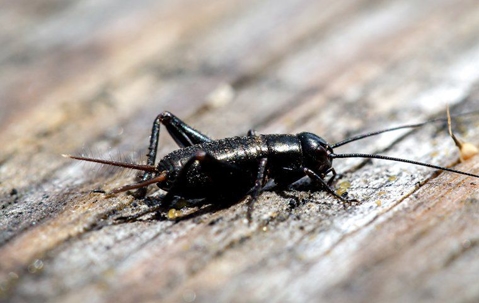Crickets are a category of pests known as occasional invaders. These types of pests aren’t likely to invade your home on their own initiative. Instead, they usually enter a home in response to environmental factors, such as a large shift in temperature or a lack of available food or water in their natural habitat.
In this article, we’ll talk about some of the basic aspects of cricket control in Longview. We’ll take a look at the general climate of the Longview area and how it may affect the behavior and habits of crickets. Then, we’ll examine how crickets breed and how the climate may affect this process. After that, we’ll help you identify some of the vulnerable points in your home and take steps to protect them from crickets.
Finally, we’ll discuss the best way to get rid of crickets – working with a professional pest control company to eradicate them once and for all. Here at Gecko Pest Control, we’re committed to helping local homeowners deal with all pests and live happier, healthier lives.
Longview’s Climate And Its Influence On Cricket Behavior
Let’s begin by taking a quick look at the general climate of the Longview area. Like many insects, crickets thrive in warm, humid places, and Longview is an ideal environment for these pests. With warm temperatures and lots of rainfall year-round, crickets have everything they need in Longview. Crickets are ectothermic, meaning they need their surroundings to be at a certain temperature to perform important body functions. When the temperature is warm, you may be able to hear crickets chirping faster.
In the next section, we’ll examine another effect of climate on crickets.
Cricket Breeding Habits In Longview’s Unique Climate
Crickets are drawn to areas of sunlight and warmth. Their ideal temperature seems to be somewhere in the low to mid-eighties. At this temperature, the cricket life cycle progresses faster; this includes reproduction, as crickets will eat more and breed more. This increased breeding rate means more cricket eggs, which, in turn, means more new crickets.
Unfortunately, the Longview climate is able to provide crickets with their ideal temperature, or close to it, for a significant portion of the year, meaning that crickets may be more of an issue here than in other parts of the country.
Cricket Entry Points: Identifying Vulnerabilities
Now that you’ve learned a bit about how cricket behavior changes in warmer climates let’s talk about how they might get into your home. Crickets often enter homes to obtain moisture or escape from less-than-ideal temperatures outside. Cracks around windows and door frames, piles of weeds or debris, and outdoor lighting can all attract these pests. Here are some practical tips for how to keep crickets out of your house:
- Seal any cracks or gaps in the exterior of your home.
- Make sure window and door screens are in good condition.
- Clean up piles of debris, weed gardens, and trim shrubs close to the house.
- Reduce excess moisture in and around your home.
Following this advice should help you reduce the risk of a cricket infestation in your home. For immediate assistance getting rid of these pests, you can always contact Gecko Pest Control.
Consulting With Pest Professionals: How To Keep Crickets Away
For over 20 years, Gecko Pest Control has provided local homeowners with reliable solutions to their various pest problems. We’re a local, family-owned business that focuses on giving our customers exactly what they need. Our technicians are highly trained and equipped with the best equipment to ensure they get the job done right. We even offer free estimates and free inspections.
Contact Gecko Pest Control today to learn more about how we can help you get rid of crickets.

